Rowena Wiseman's Blog, page 11
May 12, 2015
Juggling writing with motherhood series
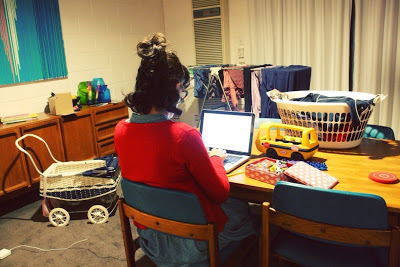
This is how a mother gets any writing done ... she pretends there isn't washing to be folded, ignores the mess and hopes a sales guy doesn't turn up on her doorstep trying to sell solar panels as it will wake her sleeping child ...
My writing time has felt like hours borrowed from family time for many years. But things are getting easier. My children now sleep in longer in the mornings, next year they will both be in school, they're more independent now and need me less, so slowly, finally, my guilt is easing. And guilt is being replaced by pride. I'm proud to show my kids that if you work really, really hard at something and scramble over the rubble of rejection, you may even achieve something. I'm hoping this will be a longer lasting lesson than those times when the door was shut and I couldn't play Lego.
In this series, I wanted to ask three other writing mothers how they've juggled writing time with parenting and if they have any tips for other writing mums ...
Liz Madrid writes contemporary new adult as well as paranormal fiction and her novel Loving Ashe has had over a million reads on Wattpad in less than six months. Liz Madrid suggests that writing mothers set up a schedule to write each day and that they also find balance outside of the family to recharge those writing batteries. Read Liz Madrid's responses here ...
Tess Woods 's debut novel Love At First Flight has just been published by HarperCollins Australia's Impulse. Her advice for other writing mothers is simple - get a good coffee machine, a cleaner and build a community of other writing mums around you! Read Tess Woods's responses here ...
Coming soon will be Ericka Clay, author of recently published Unkept (Bannerwing Books) and founder of TipsyLit ...
Published on May 12, 2015 20:53
May 11, 2015
How my novel is getting published by HarperCollins
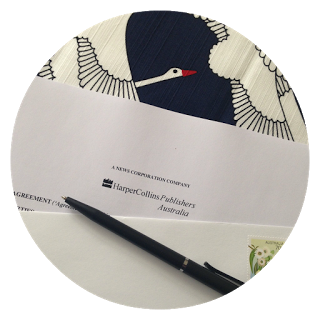 It's finally happened - I've signed a contract with one of the Big Five publishers! HarperCollins's digital first imprint Impulse will be publishing my novel The Replacement Wife - about a woman who falls in love with another man, so she tries to find a wife for her husband. Here's how it happened ...
It's finally happened - I've signed a contract with one of the Big Five publishers! HarperCollins's digital first imprint Impulse will be publishing my novel The Replacement Wife - about a woman who falls in love with another man, so she tries to find a wife for her husband. Here's how it happened ...I sent the synopsis and first three chapters to HarperCollins Australia's online submissions scheme The Wednesday Post . On the following Tuesday I heard back from the publisher at Impulse asking if I'd be happy to publish it as an ebook. She sent me an information sheet about Impulse and asked me if I was happy for the novel to be published as an ebook to send through the rest of the manuscript. If HarperCollins had offered to print my story on low-grade toilet paper I probably would have said yes. So of course, I sent through the rest of the manuscript!
A week later, I heard back from the Publisher saying the Impulse team really liked my manuscript. BUT, before they could offer me a contract, they had concerns about the way I'd narrated the story and would I consider changing it to be more immediate. The story had originally been written as the mother's confession to her son, so it was told in the second person - 'your father', 'that was for you', 'you boys were'. Half way through writing the story I'd had a niggling worry about whether it was working or not, but I was so far in, I'd kept going with it. So I wasn't surprised that they'd found this a problem. However, I'd also been worried that a commercial publisher wouldn't like my ending and would want me to change it for a mainstream audience. The ending was important to me, so I said alright I'll change the narrative, but I just want to make sure I can keep the ending as it is. She said the ending was fine. Phew.
So I cleared two weeks for the rewrite. I booked in family members to babysit the kids and took some time in lieu from work. I had to write a new beginning and in some chapters almost every sentence had to be changed. It was a massive undertaking and with any rewrite there's always the fear that I was making it worse than better. And the pressure was huge because this was a real chance of getting in with a big commercial publisher.
I submitted the rewrite and waited for a response. By the start of the second week, I was regretting that I'd told so many people. 'Have you heard back yet?' was making me wish I'd kept my mouth shut. But ten days later the publisher's name reappeared in my inbox and the news was good! They liked my rewrite and sent me an offer memo.
I'm really lucky they could see through the problems with the way I'd narrated the story and were happy to work with me on fixing this. I think the story is now stronger with the changes I've made and it's a good lesson for me - if I think something isn't working, then don't be lazy, fix it. It's hard work, but it's work worth doing.
There's something kind of serendipitous about HarperCollins publishing this book. Four years ago I became a member of Authonomy - an online community of writers. Authonomy is run by HarperCollins in the UK; writers upload their stories, members critique and rate the stories and at the end of the month five stories are selected to be reviewed by HarperCollins editors for possible publication. It was the first time I'd put my work out there in the world and in the process I became acquainted with other writers and I started to take my work more seriously. It was a really important step in my development as a writer. So I'm thrilled that this book is being published by HarperCollins.
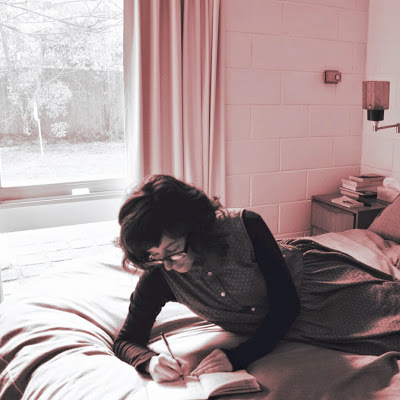
Published on May 11, 2015 13:25
May 5, 2015
Author Katie O'Rourke about her new novel A Long Thaw
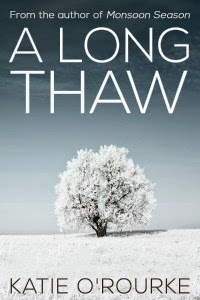
I came across Katie O'Rourke way back in 2012 on Authonomy and interviewed her on this blog about the release of her debut novel Monsoon Season. She had a fascinating story to tell about how an editor discovered her work on Authonomy and approached her about publishing it. Monsoon Season went on to become a bestselling ebook with a traditional publisher but she recently decided to self-publish her latest novel. Katie tells us more about her new novel, her decision to self-publish and her advice for new authors working with publishers ...
Please tell us about your new book A Long Thaw?
Abby and Juliet are cousins who were close as children but they become separated by a divorce in the family. When they reconnect in their twenties, they have spent the past decade living very different lives and the book deals with the ways we are changed by our experiences as well as the ways we are unchangable.
Your debut novel Monsoon Season was a bestselling ebook with a traditional publisher. Why did you decide to self-publish A Long Thaw?
The shortest version is that I didn't like the way my publisher was handling my work. I don't regret signing with them because it gave me validation and it was an essential part of the learning experience. What I came to realize is that I like to be in control of how my books are represented and sold. I like to be involved in the process and get immediate feedback. Money is not the most important thing to me.
What advice would you give to new authors about working with publishers and agents based on your own experiences?
It's so hard to give advice because the industry is changing so much and it seems like there are different paths and it works so differently for each person. I saw a published author talk about how her agent basically queried her after she'd given up on finding anyone to represent her. You can't very well follow her path! I recently read where a former MFA professor wrote that anyone who gives advice on how to break in to publishing is lying because no one knows what's going on right now. That felt true.
Based on previous experience, I would not work with a publisher unagented. That's me. I know authors who do this and are happy, but it didn't work for me. I found that without an agent, I didn't have an advocate. It's a business and the publisher's job is to advocate for the publisher.
I think the best thing anyone can ever do is decide what you want. Do you want readers? Do you want money? Do you want to see your book in stores? Have it reviewed by the New York Times? Find an audience, even a small one, who really loves it? Depending on your goals, there are different ways to get there.
Visit: katieorourke.com
Book: http://www.amazon.com/Long-Thaw-Katie-ORourke-ebook/dp/B00UDI9JRO/ref=asap_bc?ie=UTF8
Published on May 05, 2015 14:15
May 3, 2015
Art, culture and kiddy stuff in Japan
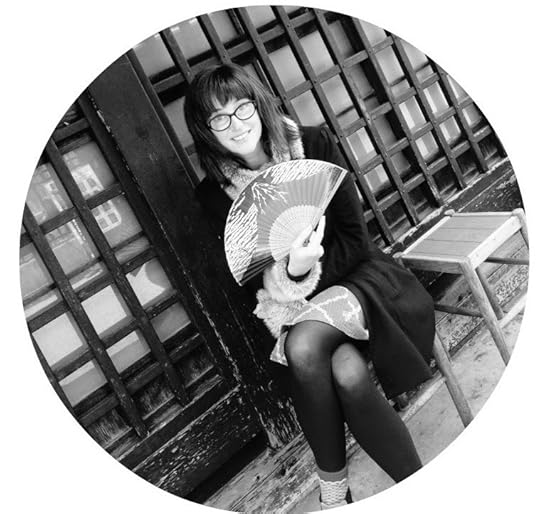
I've just returned from two fabulous weeks in Japan. I love how civilised it feels over there, how no two toilets operate in the same way, I love the food, the courteous behaviour, I like taking my shoes off before entering a hotel room and being offered a cloth so I don't get makeup on a dress I'm trying on in a store ... I love their attention to detail. Here are some of the highlights of our trip ...
The Hakone region was beautiful. We spent an afternoon at Yunessen, an onsen theme park, where we bathed in red wine, green tea and coffee. At the Hakone Open Air Museum we soaked up the Picasso and Henry Moore collections and bathed our tired gallery feet in an outdoor foot bath. My kids (7 and 4) also got chased by Japanese school girls for photos. Image of Toshiko Horiuchi, Wonder Space II
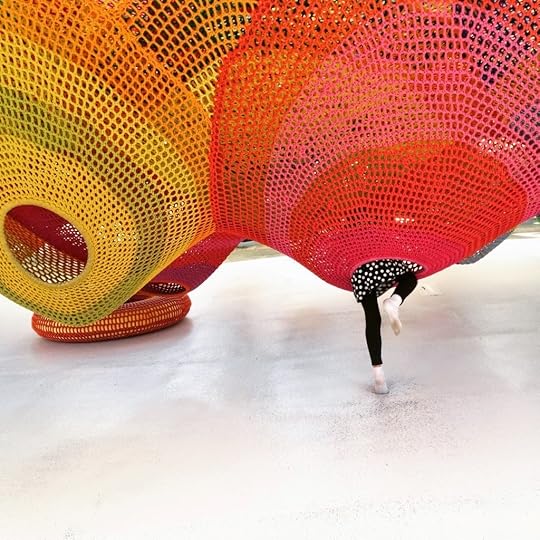
The train ride from Hakone back to Tokyo, where my 4-year old son set up a makeshift easel on our luggage and did some drawings.

The 21st Century Museum of Contemporary Art in Kanazawa where I was surprised and fascinated by Leandro Elrich's The Swimming Pool. I had this surreal moment where I thought I was just looking at a swimming pool when suddenly some people walked into the pool underneath and I realised it was a work of art and people could stand above or below.
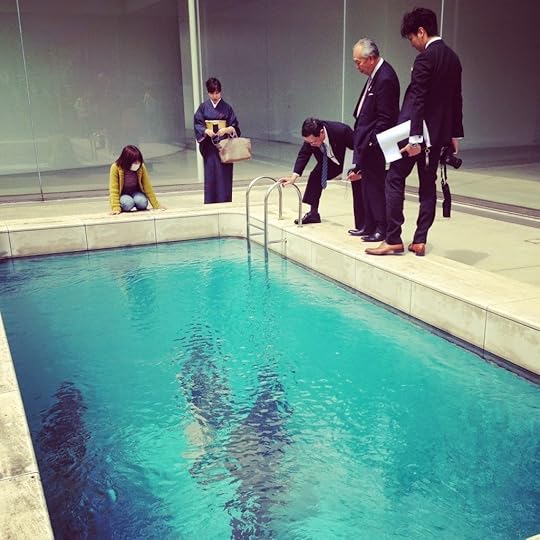
Dressing up for a Japanese photo booth at an amusement centre and singing karaoke in Kyoto.
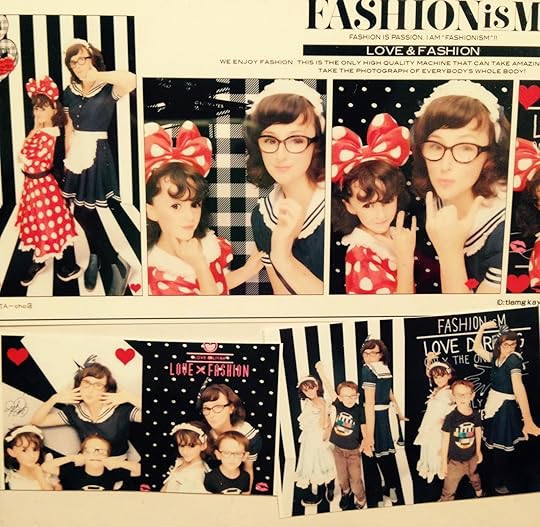
Experiencing two James Turrell works at Naoshima (the art island) - one that challenged my ideas of perception in the Art House Project and one that made me feel as though I was taking the brave step through to 'the other side' at the Chichu Art Museum. We also saw the iconic Yayoi Kusama works on the island.

Seeing the mammoth Louise Bourgeois sculpture Maman outside the Mori Art Museum in Tokyo and discovering Japanese artist Ohmaki Shinji in the Simple Forms exhibition. His work made me realise that contemporary artists have found a way to give art life - to breathe, to move, to live. It made me wonder if there's a way a writer could do the literary equivalent ... Here's a video of a similar installation done a while ago at Hakone. It doesn't quite do the work justice, but if you can imagine this with the skyline of Tokyo in the background, it will give you an idea ...
I've never been to a Disneyland before and I must confess it surpassed my expectations. After seeing a Disney exhibition at the Australian Centre of Moving Image a few years back and enjoying the new generation of Disney films with strong female characters, such as Tangled and Frozen, I've grown to really appreciate what Disney does. They weave storytelling together with art and music and make magic. For two days at Tokyo Disneyland, I got to experience that magic. On the first night, watching the light show parade, seeing Disney characters on great big lit-up moving floats, listening to Disney songs, watching the excitement on my children's faces, I wanted to freeze that moment in amber.
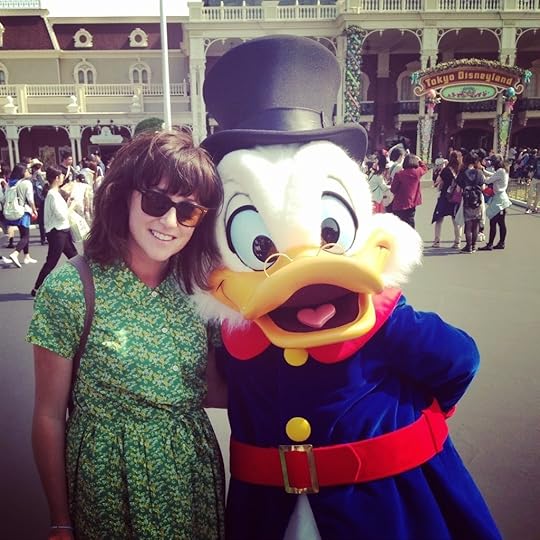
Finally, on the last day we went to Kidzania - where kids get to be adults for the day. It was a special English-speaking day and my children got to role-play being a fashion designer, firefighter, photographer, magician and even a publisher of a manga comic. Kidzania started in Mexico and is now in a few countries around the world. The city is built to scale for children, with vehicles driving around the road, it has its own currency and lots of educational and fun 'jobs' for children to do.
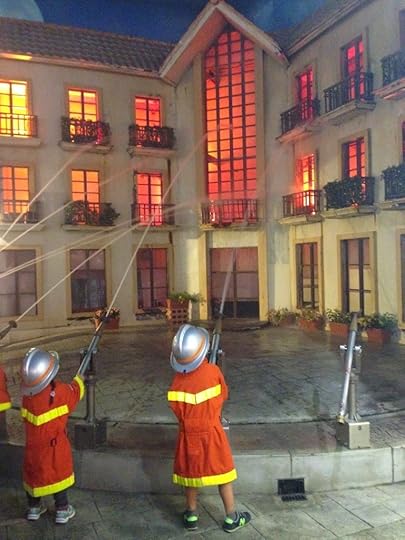
The trip was the perfect mix of art and culture and fun for the kids. I packed four books, but I only read a few Chekhov short stories. Instead, I liked looking out the window of the bullet trains, clearing my mind and observing my children's wonderment at the new things they were seeing - because it was like what a good friend of mine said when we travelled on a canal boat from Manchester 'the journey is the destination'.
Published on May 03, 2015 01:41
April 6, 2015
Christine Frazier from Better Novel Project
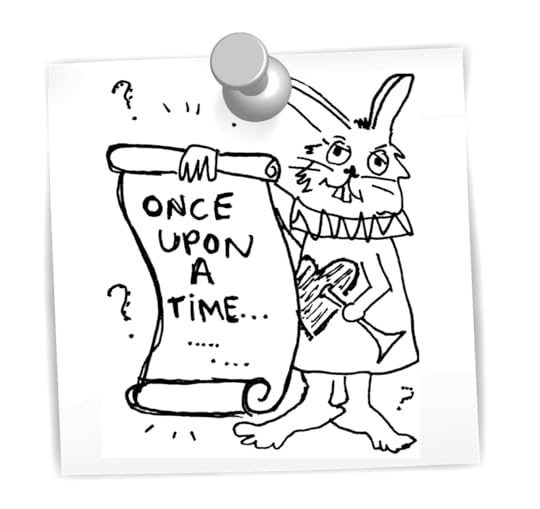 I write intuitively. I get an idea and plunge right into a story, hoping to work work things out along the way. Invariably, I get stuck around 20,000 words into the first draft of a novel. This is the point where I wish I had some kind of outline to guide me through my problem. So I’m fascinated by those writers that map out their whole book from the start. Christine Frazier has made planning a novel an art form in itself; she is deconstructing bestselling novels, discovering what elements they have in common, and using these elements as a backbone for a master outline. She believes thorough research and planning instead of luck will help her write a better novel ...
I write intuitively. I get an idea and plunge right into a story, hoping to work work things out along the way. Invariably, I get stuck around 20,000 words into the first draft of a novel. This is the point where I wish I had some kind of outline to guide me through my problem. So I’m fascinated by those writers that map out their whole book from the start. Christine Frazier has made planning a novel an art form in itself; she is deconstructing bestselling novels, discovering what elements they have in common, and using these elements as a backbone for a master outline. She believes thorough research and planning instead of luck will help her write a better novel ... Tell us a little about the Better Novel Project and where the idea came from?
Tell us a little about the Better Novel Project and where the idea came from?Better Novel Project is all about deconstructing bestselling novels, one index card at a time.
I created Better Novel Project because I always wanted to write a novel, but when I finally sat down to do it, I didn’t know how to start. Soon I felt so overwhelmed that I almost quit before I began. Instead, I decided to break down bestselling novels into smaller pieces so that I could see how their structure worked.
I am currently breaking down the first books of Harry Potter, The Hunger Games, and Twilight. Each week, I focus on a single common element that three bestselling novels share. My most important goal is to identify not just the element, but why it works. Once I’ve done that, I write up an index card and add it to my “master outline.” In the end, I hope to have the “backbone” to a bestseller. That being said, I don’t believe there is a magic formula that will spit out a bestselling novel-- the outline still needs a writer’s voice and imagination. My research serves almost as a series of guided prompts to help writers find an intuitive structure.
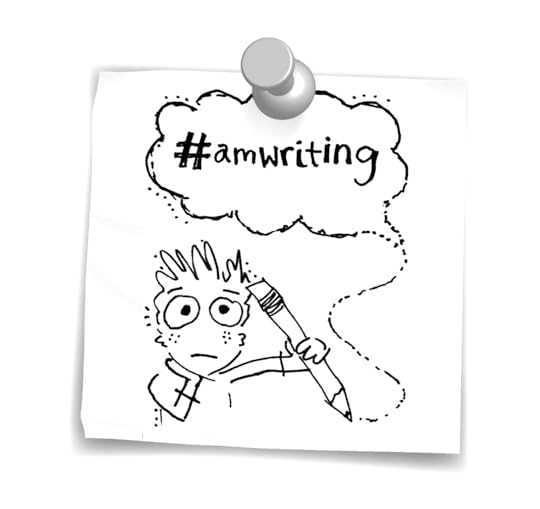
What's the most interesting or surprising things you've discovered through researching bestselling novels?
One of the most surprising things I’ve learned is that the “hero’s journey” is everywhere! I guess that’s why it’s called the monomyth. I notice it all over the place now-- commercials, movies, even songs. I am surprised that a common structure doesn’t spoil the suspense-- the story is always different, even when the underlying framework has similar features. I love hearing from different writers who have used my master outline in other genres, from thrillers to fantasy. It’s adaptable enough that any writer can use it and create an entirely different story.
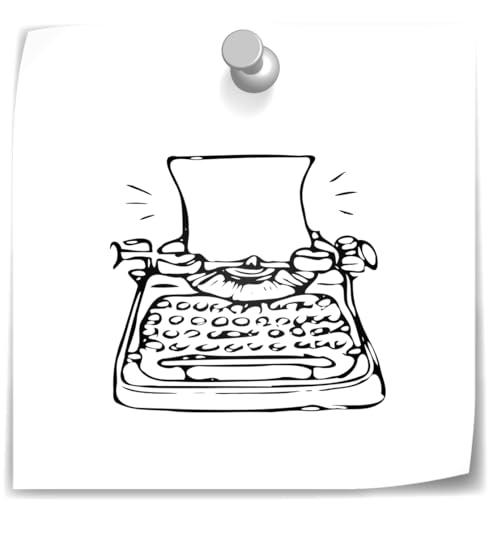 How is your research helping with writing your own novel?
How is your research helping with writing your own novel?I am the type of person who gets more creative when faced with limitations. A blank page scares me, but starting with a blank page labeled “Rescue Scene” will give me a zillion ideas. Also, writing is really a mind game. Knowing that my research and outline are solid gives me the mental push I need to put myself out there.
And in an indirect way, by posting my research online, I’ve helped my writing by creating some stakes-- now that everyone knows I have set out to write a novel, it’s harder to ditch the idea when it gets difficult. Plus, the support from all the writers I’ve met online who follow Better Novel Project has been invaluable.
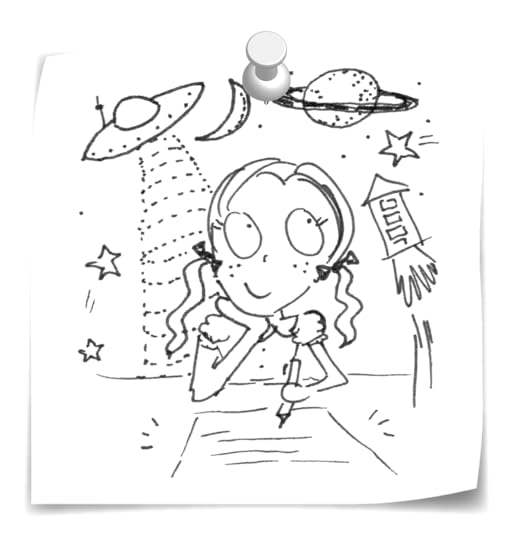 I really enjoy the drawings you've done on your site. How does sketching and using visual props assist you with your writing?
I really enjoy the drawings you've done on your site. How does sketching and using visual props assist you with your writing?Thank you! Sketching an image helps me stick to the point when I am writing a blog post-- in trying to decide what to draw, I am forced to acknowledge what the post is really about. Once I do that, any tangents or unnecessary bits in the post become more apparent. So for blog posts, I like to draw after I’ve written to aid the editing process.
I also like to doodle in the pure sense of the word. I need some absent-minded drawing time that lets my mind wander. I can’t say that those doodles resolve any major plot points for me, but staying active with my hands helps me explore some otherwise lost ideas.
Finally, the drawings assist me with my writing by growing my platform-- social media is a very visual world, so having a whimsical sketch to accompany my writing (instead of a stock photo) helps me interact a little more personally with readers who might otherwise miss me in the crowd.
Visit: http://www.betternovelproject.com/
Published on April 06, 2015 13:00
April 1, 2015
Best writing advice from a rejection letter
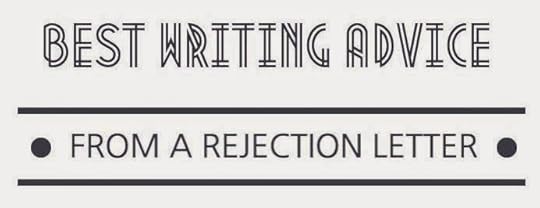
The best piece of writing advice I received was in a rejection letter from a publisher seven years ago. The unnamed reader said: ‘There seems to be an over reliance on repetition of words and phrases. Examine these words and dig deep to explore how you could use another word to say it better, differently, and inventively … when you rely on cliché you miss an opportunity to craft a sentence that develops a style and voice that no other author has.’ After I picked my self-confidence up off the floor and swept away my ego I realised it was true. My writing was commonplace, ordinary, boring and full of needless repetition. It was a harsh piece of criticism, but I’ve been grateful for it ever since.
We don’t want to listen to the same notes played the same way by musicians, or look at a landscape painted the exact same way by different artists, so why would we want to hear the same phrases used over and over again by writers? That one piece of feedback led me to the realisation that if something has been said a billion times before, find a different way to say it.
It’s hard to come up with an alternative to a cliché. You have to give your imagination wings, let go of realism and invite surrealism into your writing brain. Avoid those boring phrases you’ve heard so many times: my heart fluttered, a cold shiver ran up my spine, he took my breath away.
Here’s a few ways I’ve tried to say things differently in my YA novel Silver :
The days fold into each other, like origami, biting at me, holding me hostage … Drops of black ink bleed into my world, changing the colour of everything to monotone. = I’m sad, depressed, miserable
His words are like roadkill, flat and bloody, I can almost smell the stench of them. He’s still talking, but all I can visualise is an effigy of my heart, burning on a stake, turning to charcoal, ash discolouring the air around me.= I’m heartbroken
Hours melt through our hands and dissolve like sugar with every touch and kiss.= we’re getting it on!
Have the confidence to be abstract with your use of language. Evoke a feeling without being explicit. Tickle a heart with a peacock feather, sprinkle golden dust on some lovers, lay an egg of anxiety in someone’s soul. Read poetry to see how poets experiment with words. Think a Picasso portrait as opposed to a Renaissance portrait.
Boring writing tells us about something the way it is. Good writing moves people and leaves an impression. We read to escape reality, so just as we want our characters to do unusual and exciting things, so too should our choice of words be interesting and unusual.
Use your intuition about when to be more creative with your writing. You don’t have to write your whole book in the same style, but little moments of escape in the text are welcome. Also, try to be self-aware when a passage of experimental writing isn’t working. You need to know when you’ve overdone something and it’s not making sense. Be abstract without being confusing. Readers don’t want to feel as though they’re trying to solve a puzzle.
I’ll leave you with this passage by Tatyana Tolstaya in one of her short stories. An ordinary writer would have said the sun set and the moon rose or day turned into night, but she says it like this …
Under the horizon, under the bowl of the earth, giant wheels have started turning, monstrous conveyer belts are winding, toothed gears are pulling the sun down and the moon up. The day is tired, it has folded its white wings, flies west-ward, big, in loose clothes, it waves a sleeve, releases stars, blesses the people walking on the chilling earth: good-bye, good-bye, I'll come again tomorrow.
Originally published in Wattpad's 2014 Just Write It: Guide
Published on April 01, 2015 12:51
March 31, 2015
James Royce Patterson from Penleak writers collective
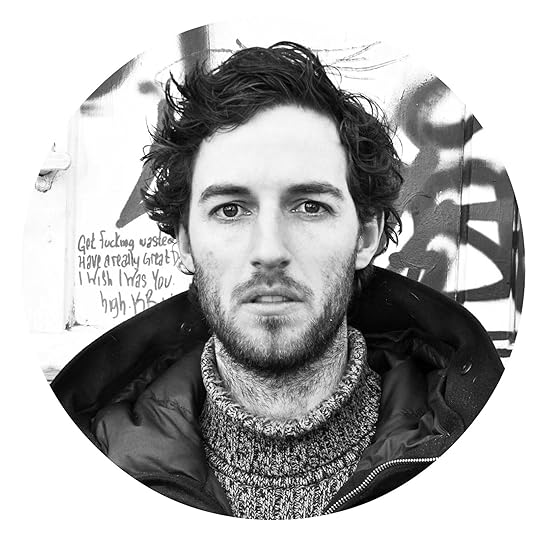
James Royce Patterson is an author of dark fantasy; he's into myths, monsters, and hidden worlds where everything is strange. He's also a member of the writing collective Penleak, along with Benjamin Lancaster and Christopher Tunstall. The three members contribute writing advice and articles to Penleak. James tells us about his new book and collaborating with other writers, artists and musicians ...
Please tell us a little about Penleak and how the idea for the site was born?
Penleak started about four years ago in Toronto, though none of us were aware of it at the time. My friend Benjamin Lancaster was working as an editor for a small publishing house and agreed to be the editor for my first, awful attempt at a novel. A couple of years later we started a writer’s workshop that over time whittled down to just three members, the two of us and the fine English gentleman Christopher Tunstall. We spent the next year critiquing each other’s work, learning from each other, and growing as writers.
In late 2013, over a few pints, the three of us decided it was time to establish ourselves online, and become seen. We didn’t want to be just another bunch of writer’s plugging themselves shamelessly. We wanted to offer the community something. We began working on an advice site. Considering there were already so many writing advice blogs out there we wanted to offer something a little different. So we built a site that’s all about ease. We wanted it to be a comfortable and engaging read. We wanted it to be a quick read. In essence, we wanted it to be appealing to the goldfish attention span of the internet generation. We still have a lot to learn and change, but hopefully we’ve given some writers a little lift on their arduous journeys.
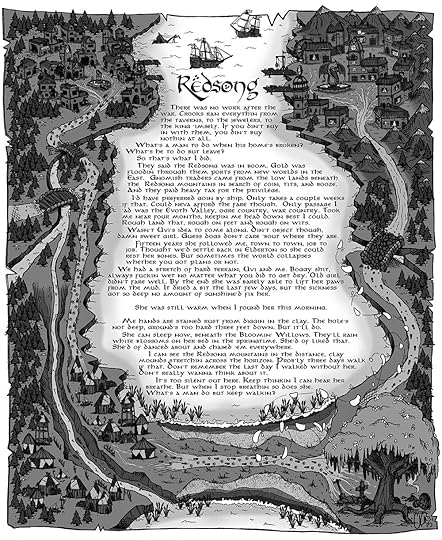 How does collaborating with other writers, artists and musicians help your work?
How does collaborating with other writers, artists and musicians help your work?The writing life can be a lonely life. As much as I love drifting away into fantasy worlds and living there for a while, I sometimes want to share that joy. That’s what collaboration does for me. It’s a sort of communion, allowing two or more people to feel and experience the same thing at the same time. And it creates this fascinating world where you witness a creation grow, on its own in a way, a product of multiple view-points converging yet belonging to no one. Somehow the whole process feels more alive than solitary work.
There’s also a valuable practical element. I’ve worked not only with other writers, but with artists and musicians. I learned so much from each of them. You pick up tricks and techniques and allow another perspective to seep into yours and change it forever. I believe there is no greater learning opportunity for an artist than to mesh minds with the mind of another.
Please tell us a little about your novel Who is the bringer? due out this year.
Who is the Bringer? or the Bringer (I haven’t quite decided on the title yet) is a dark and weird crossover fantasy, initially set in the make-believe town of Fliffton. The protagonist, Billy Cunningham, is the only Fliff in town who isn’t a cake-obsessed, puppy-patting, ever-happy idiot.
For years he tries to escape to the ominous castle overlooking town (the Bringer’s Abode) and finally succeeds after many failures. He meets this mysterious Bringer, a powerful figure with intentions that remain unclear despite their meeting. Deciding the Bringer will send him back, Billy flees through a secret door and ends up in an Earth metropolis. It feels like freedom for the first time in his life, but there is a strange and violent price to pay, not so much for him but for the rest of the people inhabiting his new world. He must return to the Bringer and stop the collapse of reality before there is nothing left to save.
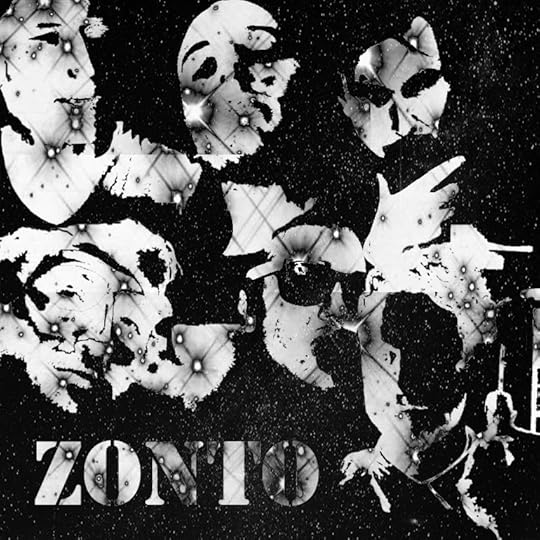 What do you like most about being a writer and musician in this digital age?
What do you like most about being a writer and musician in this digital age?Direct access to the market for a start. I can share my work now without having to kowtow to the traditional industry gatekeepers. There’s greater opportunity for me to represent my own work but obviously that comes with greater responsibility. If I do my due diligence, and create a quality product, the market is there for the taking.
It also just makes the whole working process so much easier. As a writer I can do my research, I can keep up to date with the community, I can network, a can organize, and I can write all on the same device. The same goes for music. Zonto was comprised of six different artists with six very separate schedules. For all of us it was a second project at best. Without dropbox, we never would have made these tracks. Our brilliant producer Stephen Cooper of Mune would post a looped beat on our dropbox and we’d write a response in our own time. It allowed six different guys with very busy creative lives to come together and produce work of a high quality whilst rarely being in the same place at the same time.
Visit: http://www.jamesroycepatterson.com/
Penleak: http://penleak.com/jamesroycepatterson/
Twitter: https://twitter.com/mrJRPatterson
Published on March 31, 2015 12:54
March 24, 2015
Headless Books
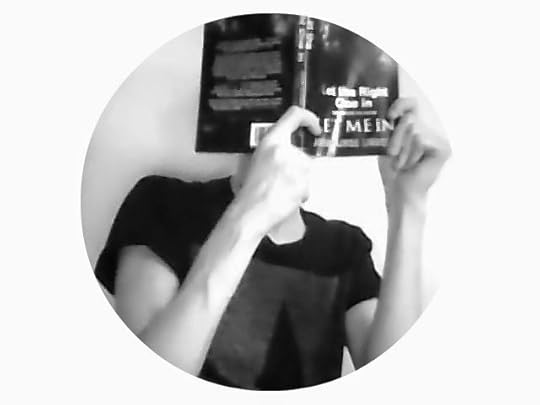
In an era of shameless self-promotion and selfies, there’s something refreshing about people who wish to remain anonymous. I've always been intrigued by mystery people, from the guys from TISM to incognito street artists, so when I came across Headless Books via Twitter I just had to take a look at one of his headless book review videos. I found that I liked his calm, analytical and honest approach to reviewing books and that I was listening to what he was saying rather than being distracted by an on-screen persona. I wanted to find out more about why he decided to become a booktuber and what Headless Books is all about ...
Why did you decide to start Headless Books on YouTube?
I have been watching booktube for a couple of years now and after a few months I wanted to start my own channel. I tried filming a couple of videos but found watching myself painful and quickly gave up on the idea. However, with a further boom of booktube (and all types of youtubers getting worldwide recognition) I decided to give it another go. I wanted to share my thoughts about books on youtube and thought my opinions would be of interest to other people. I am very into the YA bubble but read equal amounts of other genres, including crime and adult contemporary novels. Having failed to find any other booktubers out there with the same reading tastes as mine I thought I definitely should start my own channel. I could introduce the booktube community to the kind of books I like, books I think they would also enjoy. I kept being unhappy with the results of any trial videos - owing to being paranoid about being on camera, but then I came up with the idea of not showing my face and then Headless was born!
How do you decide which books you are going to review?
At the moment the books I review are the books I have bought for myself to read. I have no dealings with publishing companies who sent me ARC copies or free books (unfortunately!) and so I just pick books I want to read and end up reviewing them. I review books I enjoy and do not enjoy. I think that’s really important because I don’t want to be a booktuber who 'loves' every book they read and gives five stars to absolutely everything. I want to provide a range of fair reviews of both books I have enjoyed and not enjoyed. I do not plan to purposely pick my reading choices to suit my audience . . . I think a plus of my channel will be that I perhaps read books that they haven’t read or found.
Who do you look up to in the booktubing community?
The booktube community is so vast and I have watched a lot of different videos. I like booktubers who are hard to please (so if they endorse a book then it must be good) and also ones who read widely. I enjoy YA but I also enjoy reading more than just this so a booktuber who has diverse reading tastes is always good. I’m not keen on the preachers though! I don’t need a fancy video or amazing lighting, just someone who reads things I might pick up and a clear, distinct opinion.
What advice would you have for others about the art of doing a fair book review on YouTube?
My main advice would be to be honest. Don’t try and film a scathing attack on the book just to be funny – to me that feels unfair and I know I would hate it if someone did this to my writing. I would suggest someone thinks carefully about what you think of the book before filming your review so you know both the good and the bad points of the book to provide a balanced argument. Think about different elements of the novel, writing style, characterisation, setting and so forth so in your review it is more than you just stating it is really good. Try to go beyond this to explain why. I think this is important as if you just sit and rave about a book, but don’t fairly communicate why it is so amazing, then it’s not going to accurately persuade someone else to give it a go.
Watch: https://www.youtube.com/channel/UCrKO5kPm6MjthJdvSQi3Zpg/videos
Published on March 24, 2015 12:23
March 10, 2015
10 tips for writers using Twitter

Have followers. If you're sending tweets out to twelve people, why bother? Your first step is to build an audience. Follow someone similar to yourself, follow their followers, hope that some of them follow you back. I've found that roughly one in three follow back on Twitter. You may find that Twitter will moderate how many people you follow and may stall you at around the following 2000 mark.Use sites like https://unfollowers.com/ to monitor recent unfollowers and people who aren't following you back. Use sparingly though, because Twitter will suspend your account if they catch you overusing it.Use hashtags, they're a great way to reach an extended audience. Some of my favourites are #amwriting #writetip #indiepub #askeditor #author #ebook #litfic #kidlit #getpub. Use hashtags to find a unique audience. My Aunty Arty children's books are about art and may be of interest to art teachers, so I was excited when I discovered a whole community of art teachers on Twitter using the hashtag #artsed.Don't start a post with @someonesname as it only goes to that person. Put a full stop or a word in front of it, to make sure all your followers see the post If you're promoting something, provide a link. Make sure it's the correct linkTry Twitter's new analytic tools. Go to Twitter ads - Analytics - Tweet activity to see number of impressions and engagements for each of your tweets, you may find some surprising results.Add your favourite Twitter users to lists. I've got one list going, obscurely named 'Alpha', but one day I'd love to get really organised and have a list each for publishers/editors, bloggers/reviewers and literary journalists. Twitter is a great way to build up a contacts list of people in the industry.Hootsuite has been superseded by Buffer, in my humble opinion. It's easy to queue posts and set scheduling times for different days of the week. Use the 'Analytics' function to see most popular posts and 'Re-Buffer' them for another time. I'm on the $10 a month, Awesome plan. Along with Spotify, it's the only monthly online plan I'm happy to pay for .. http://www.bufferapp.com/Schedule slight variations of the same tweet for different times of the day and week if your audience is global. If I have a new blog post I want to get out there, I'll schedule at least 10 posts for it in the first week. If I think it's a good post, I might keep on promoting it for a few weeks, but it's important to let it go eventually. If people keep seeing the same tweets over and over again, they might start unfollowing.Post images, images, images. Yes, we're writers and we like text, but images will make your post stand out. I've recently started using http://piktochart.com/ to create text-based graphics to grab people's attention on Twitter.
Published on March 10, 2015 02:59
March 4, 2015
Wattpad and Amazon's new crowd-writing site
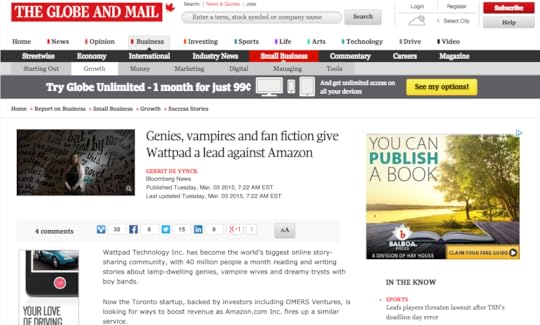
My comments about Wattpad in The Globe and Mail article about Amazon's new crowd-writing site ... http://www.theglobeandmail.com/report-on-business/small-business/sb-growth/success-stories/genies-vampires-and-fan-fiction-give-wattpad-a-lead-against-amazon/article23259759/
Published on March 04, 2015 02:07



